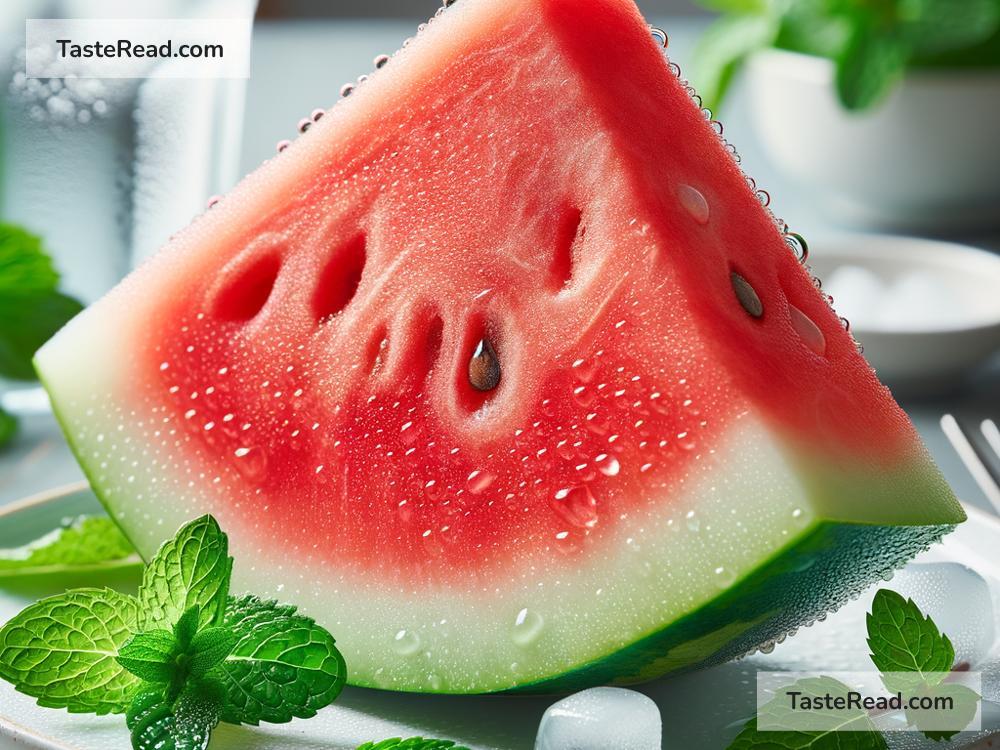Why Fruits Like Watermelon Taste More Refreshing When Chilled
There’s nothing quite like sinking your teeth into a slice of chilled watermelon on a hot summer day. The cool rush of its sweetness feels like heaven, perfectly soothing when the sun’s rays turn everything into a melting mess. But have you ever stopped to wonder why fruits like watermelon taste more refreshing when chilled? Let’s take a closer look to understand this simple yet delightful phenomenon.
The Science of Temperature and Taste
Taste and temperature are closely intertwined. Our taste buds detect five main flavors—sweet, salty, sour, bitter, and umami—but how we perceive these flavors often depends on the temperature of the food. When watermelon is chilled, we experience its sweet flavor more distinctly than we would if it were warm. This happens because cold temperatures suppress bitter or sour tastes while enhancing sweet ones, making fruits taste fresher and more flavorful.
For watermelon, a naturally sweet fruit, chilling amplifies its sugary goodness and balances its mild tanginess. At cooler temperatures, your taste buds focus more on the pleasant sweetness of the fruit. Warm watermelon, on the other hand, might taste overly watery or bland, which is why it isn’t quite as enjoyable.
The Texture Factor
Another reason chilled watermelon feels so refreshing is its texture. Watermelon has a crisp yet juicy consistency, and cooling it enhances that sensation. When the fruit is cold, the firmness of its flesh becomes more pronounced, giving it a satisfying bite. This crispness contrasts beautifully with its smooth, hydrating juice, creating an ideal texture combination that leaves you feeling rejuvenated.
Warm watermelon, in comparison, can have a softer, mushy texture that isn’t as appealing. The coolness makes every bite feel light and invigorating—exactly the kind of relief you crave during hot weather.
Hydration Boost
Watermelon is made up of about 92% water, making it one of the most hydrating fruits on the planet. On a hot day, we sweat more and lose water from our bodies. Eating watermelon helps replenish those lost fluids and keeps you hydrated. When the fruit is chilled, its cool temperature adds a bonus soothing effect, making it feel like an instant internal air conditioner.
The cold water content of a chilled watermelon activates nerve endings in your mouth that signal refreshment to your brain. Essentially, this chilly hydration kick tricks your mind into thinking you’re cooling down faster. That’s why chilled watermelon not only tastes better but feels better too!
Aromas and Temperature
Did you know that temperature also impacts the smell of food? Watermelon has a mild aroma that isn’t very strong at colder temperatures. This is a good thing because warm watermelon tends to release a more distinct smell, which some people might find less enjoyable. The chilling process tones down that aroma, allowing you to focus fully on the sweet and juicy experience without being overwhelmed.
A pleasant aroma also enhances the taste to some degree. While you’re eating chilled watermelon, the subdued smell works alongside the crisp texture and sweet taste to create a harmonious eating experience.
Psychological Comfort
Part of the enjoyment of chilled watermelon is psychological. During hot summer days, we crave things that make us feel cool and refreshed. Cold watermelon checks all those boxes—it’s juicy, sweet, hydrating, and chilled to perfection. The association between the fruit’s cold temperature and relief from heat builds a positive connection in our minds.
Think of it as a reward for enduring the heat. As you take a bite of icy watermelon, you almost immediately feel relief, and your brain registers that as a comforting experience. Warm watermelon simply lacks this reinvigorating sensation.
Versatility of Chilled Fruits
While watermelon is a classic example of how chilling enhances flavor and texture, it’s not the only fruit that benefits from a cool temperature. Grapes, oranges, and berries also taste more refreshing when served chilled. The science behind this is similar: cold temperatures heighten sweetness, improve texture, and boost hydration.
In fact, many recipes that feature fruits—like smoothies, salads, or sorbets—incorporate chilled ingredients because the cooling effect makes the dish more enjoyable. Eating fruits cold is an easy way to transform a basic snack into a revitalizing treat.
Conclusion
Watermelon and other fruits taste more refreshing when chilled because of how cold temperatures enhance flavor, texture, and hydration. Chilling emphasizes the sweetness of fruits, makes their texture crisp and enjoyable, and activates your body’s cooling sensations. Combined with the psychological comfort of eating something cold on a hot day, it’s no wonder we gravitate toward chilled watermelon for instant refreshment.
So, the next time the summer heat has you sweating, grab a cold slice of watermelon from the fridge. You’ll not only be treating yourself to a healthy snack but also to a moment of pure, cooling bliss.


